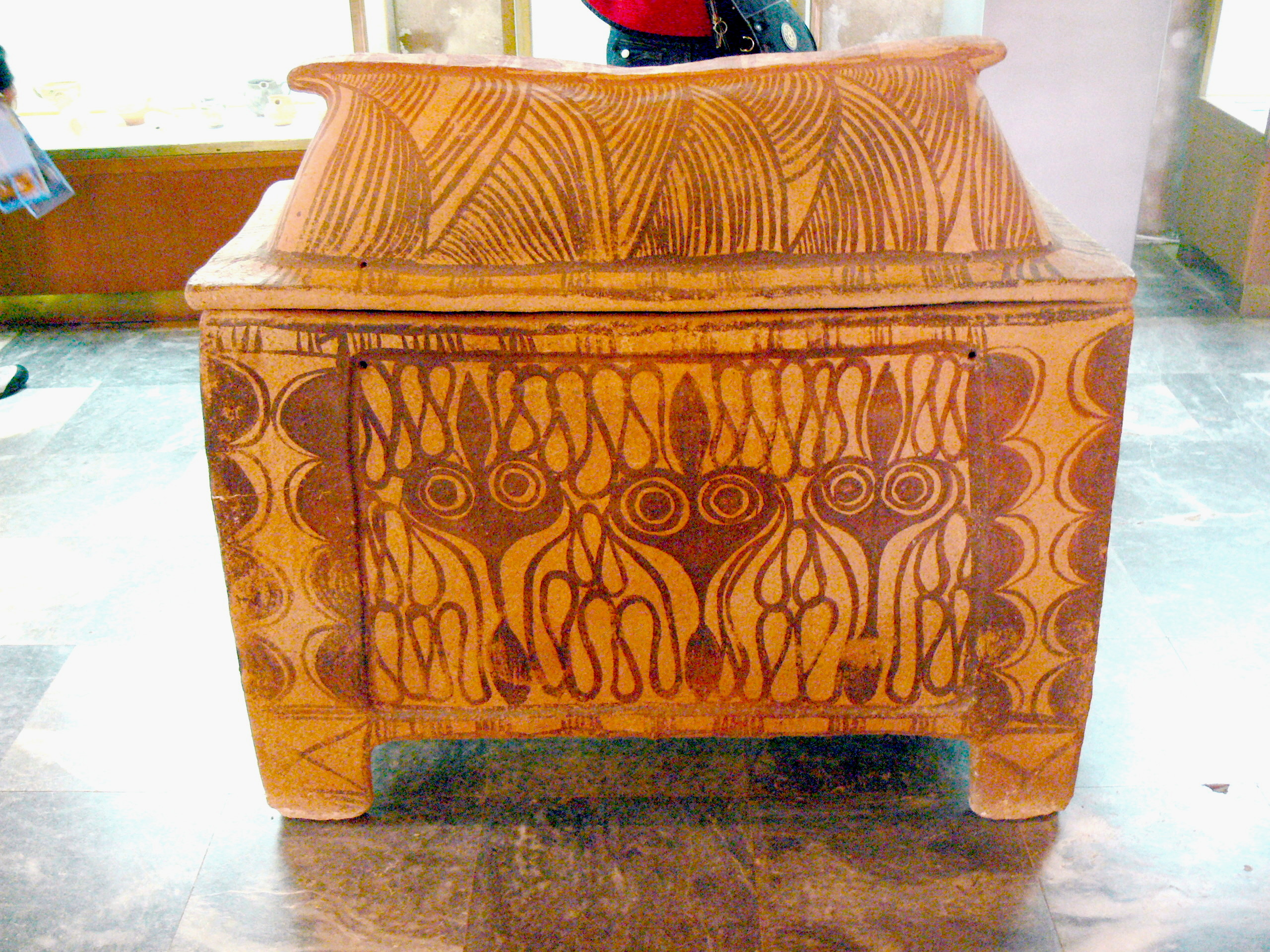Armeni (archaeological Site) on:
[Wikipedia]
[Google]
[Amazon]


 Armeni is the archaeological site of an ancient
Armeni is the archaeological site of an ancient
"Armeni"
Retrieved 11 May 2013. * Myers, J.W., Myers, E.E. and Cadogan, G. "Achladia" ''The Aerial Atlas of Ancient Crete'' * L. Godart and Y. Tzedakis: ‘Temoignages archéologiques et épigraphiques en Crète occidentale du Néolithique au Minoen Récent III B’ Incunabula Graeca 93 (1992)

Minoan
The Minoan civilization was a Bronze Age Aegean civilization on the island of Crete and other Aegean Islands, whose earliest beginnings were from 3500BC, with the complex urban civilization beginning around 2000BC, and then declining from 1450B ...
cemetery on Crete
Crete ( el, Κρήτη, translit=, Modern: , Ancient: ) is the largest and most populous of the Greek islands, the 88th largest island in the world and the fifth largest island in the Mediterranean Sea, after Sicily, Sardinia, Cyprus, ...
, roughly eight kilometers south of the modern town of Rethymnon
Rethymno ( el, Ρέθυμνο, , also ''Rethimno'', ''Rethymnon'', ''Réthymnon'', and ''Rhíthymnos'') is a city in Greece on the island of Crete. It is the capital of Rethymno regional unit, and has a population of more than 30,000 inhabitants ( ...
.
Site
Armeni has been under excavation since 1969 by Dr. Yiannis Tzedakis. Over 200 chamber tombs and onetholos tomb
A beehive tomb, also known as a tholos tomb (plural tholoi; from Greek θολωτός τάφος, θολωτοί τάφοι, "domed tombs"), is a burial structure characterized by its false dome created by corbelling, the superposition of suc ...
have been found. All date to the Late Minoan
The Minoan chronology dating system is a measure of the phases of the Minoan civilization. Initially established as a relative dating system by English archaeologist Sir Arthur Evans between 1900 and 1903 based on his analysis of Minoan pottery ...
era.
The chambers are approached by entrance passages, or dromos, which start at ground level and descend to the entrance of the tomb. The tombs are not identical, with some having ramps while others have stairs. The walls of the dromos have been cut in such a way that they are closer to each other at the top than they are at the bottom, probably to help bear the weight of the earth above. The entrances were originally covered by a large stone, which is usually still next to the entrance. Several of the larger tombs have a pillar in the center of the chamber. One tomb's walls are lined with stone benches cut directly from the rock.
Artifacts
Artifacts from the chamber tombs include seal stones, jewelry, bronze tools, stone vases, bronze vessels and pottery. Clay larnakes, a type of small coffin, painted with double axes, hunting scenes, andHorns of Consecration
"Horns of Consecration" is a term coined by Sir Arthur Evans for the symbol, ubiquitous in Minoan civilization, that is usually thought to represent the horns of the sacred bull. Sir Arthur Evans concluded, after noting numerous examples in Minoa ...
were also excavated. These artifacts can be found at the Archaeological Museum of Chania and the Rethymno
Rethymno ( el, Ρέθυμνο, , also ''Rethimno'', ''Rethymnon'', ''Réthymnon'', and ''Rhíthymnos'') is a city in Greece on the island of Crete. It is the capital of Rethymno regional unit, and has a population of more than 30,000 inhabitants ...
Museum.
Over 500 skeletons have been excavated, yielding useful information about the diet of the Minoan people in this area. They ate high carbohydrate
In organic chemistry, a carbohydrate () is a biomolecule consisting of carbon (C), hydrogen (H) and oxygen (O) atoms, usually with a hydrogen–oxygen atom ratio of 2:1 (as in water) and thus with the empirical formula (where ''m'' may or m ...
diets but not much meat.
Tourism
The site is open to tourists, including entrance into several of the main rock-cut tombs. Automatic lighting has been installed. There is an entrance fee of €3.References
* Swindale, Ia"Armeni"
Retrieved 11 May 2013. * Myers, J.W., Myers, E.E. and Cadogan, G. "Achladia" ''The Aerial Atlas of Ancient Crete'' * L. Godart and Y. Tzedakis: ‘Temoignages archéologiques et épigraphiques en Crète occidentale du Néolithique au Minoen Récent III B’ Incunabula Graeca 93 (1992)
External links
* http://www.minoancrete.com/armeni.htm Photos and video of the site. Retrieved 12 May 2013. Rethymno (regional unit) Minoan sites in Crete Ancient cemeteries in Greece Rock-cut tombs {{AncientGreece-archaeology-stub